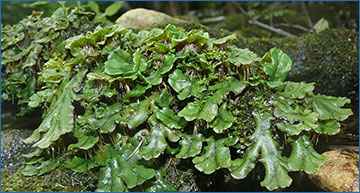
Introduction to Riccia fluitans
Riccia fluitans is a unique amphibious liverwort that can seamlessly transition between land and water environments. This remarkable ability to adapt has intrigued scientists, leading to a study using advanced RNA sequencing techniques to understand the molecular changes that occur during these transitions.
The Study: Analyzing RNA Changes
Researchers at the University of Warmia and Mazury employed nanopore direct RNA sequencing to capture the epitranscriptomic (RNA-related) changes in Riccia fluitans as it moved between terrestrial and aquatic habitats. This method allows scientists to study the RNA molecules in detail, providing insights into how the plant’s gene expression adapts to different environments.
Key Findings: Differential Gene Expression
One of the significant discoveries was the identification of 45 differentially expressed genes (DEGs). These genes exhibited changes in their activity levels depending on whether the liverwort was in water or on land. Specifically, 33 genes were found to be downregulated (less active) in terrestrial forms, while 12 were upregulated (more active) in aquatic forms. This indicates a robust response in the plant’s genetic machinery to environmental shifts.
m6A Methylation: A Key Adaptation Mechanism
The study also examined N6-methyladenosine (m6A) modifications, a type of chemical modification that can occur on RNA molecules. They discovered a stark contrast between the two forms of Riccia fluitans: there were 173 m6A sites in the aquatic form compared to just 27 in the terrestrial form. This significant increase in methylation in aquatic environments suggests that m6A modifications play a crucial role in helping the plant rapidly adapt to water.
Poly(A) Tail Length and mRNA Stability
Another critical adaptation mechanism involved changes in the poly(A) tails of RNA molecules. Poly(A) tails are stretches of adenine nucleotides added to the end of RNA molecules, which influence their stability and efficiency in protein translation. The aquatic form of Riccia fluitans showed longer poly(A) tails, which are associated with increased mRNA stability and more efficient translation. This adaptation likely enhances the plant’s resilience to water stress by ensuring that important proteins are produced more efficiently.
Polyadenylation Signals and Adaptation
The researchers also observed significant differences in polyadenylation signals—the sequences that determine where poly(A) tails are added—between the aquatic and terrestrial forms. Nine transcripts showed notable changes in tail length, indicating that Riccia fluitans adjusts these signals to modulate mRNA stability and translational efficiency, thereby fine-tuning its gene expression in response to environmental conditions.
Conclusion: Insights into Plant Adaptation
These findings reveal a sophisticated level of post-transcriptional regulation in Riccia fluitans, enabling it to fine-tune its gene expression to adapt to varying living conditions. The differential methylation and polyadenylation of RNA molecules highlight the plant’s dynamic and flexible response mechanisms.
Maździarz M, Krawczyk K, Kurzyński M, Paukszto Ł, Szablińska-Piernik J, Szczecińska M, Sulima P, Sawicki J. (2024) Epitranscriptome insights into Riccia fluitans L. (Marchantiophyta) aquatic transition using nanopore direct RNA sequencing. BMC Plant Biol 24(1):399. [article]




